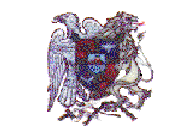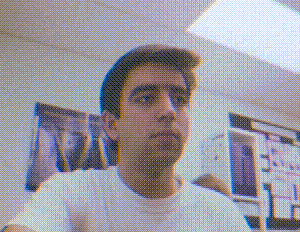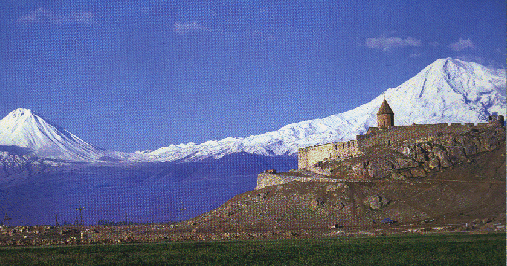Areg Danagoulian--NCSU Physics Undergrad.

 Areg Danagoulian
Areg Danagoulian
Field of Undergraduate Studies: Physics
Office: (919) 515-4196
"Relative" Home: (919) 512-0946
"Permanent" Home: (910) 282-5472
- E-mails:
- areg@bartok.physics.ncsu.edu
asdanago@eos.ncsu.edu
- Reading:
- I
have been reading the supernova article of my professor
Dr. Reynolds . This
article was about the supernovae and supernova remnants, their observed properties,
their classification. Also there was an interesting summary of different
observations. At the end there was also some theory which explained the
observations.
Also I have been reading the thesis of David Allen Moffett, which was
written at NCSU for the Degree of Master of Sciences, and which
concentrated primarily on the studies of supernova remnants W49B and 3C391.
More precisely, he studied polarization of radio emission from
those remnants, their synchrotron radiation, and remnant age. Also he had done
spectral index and total intensity studies.
In addition to all of this I have been doing some work on archiving files
which were consuming a big space on the disk.
- Research interests:
-
My research is concentrated on data reduction
of UV data
of different supernova remnants(SNR in short). Right now I am doing some job on SNR 3c397.
The observations
are done in VLA(Very Large Array), which is loccated in New Mexico, and wich
is basically an interferometer, made of an array of 21(or more) antenas, which
are placed in the shape of Y. The information in UV files is the Fourrier
Transform of the radiointensity of the
sky-region. The function of sky brightness is being broken into Fourrier series components,
and each pair of antenas(each baseline) gives you one of those. Later the data in
these UV files is reduced with appropriate software, called AIPS
(Astronomical Immage Processing System), which turns
those files into the maps of radiointensity of the sky-region being observed.
During this the software adds the Fourrier Series components, in order to receive the
sky brightness function. However, because of limitations in information, we
have only very few components, and this causes a lot of noise. The function
which should be smooth begins to appear having very little wigles. There are
different algorithms used to reduce the amount of noise in the immage.
The ones that we use are CLEAN and MEM(Maximum Enthropy Method).
Thus, we receive the radio-immage of the remnant. During this reduction
a huge amount of information of course is lost. A lot of conclusions can be
made by comparing the radio-immages of a remnant with its optic, infrared,
and X-ray immages.
Here is the abstract which describes my
work of Summer/95.
- General Interests:
- Playing violin, singing. Playing chess(the interest toward the later one
is rather inconstant: one day I am a maniac of chess, the other day--pffff!)
- More personal info:
- I am a physics student here at North Carolina State University, and
the coming year I am going to be a sophomore, in junior standing in
physics and Mathematics.
I am born on 01/25/1977. Since my childhood
I have been in following countries: Georgia,
Russia, France(lived for 1.5 year over there), Germany, Spain, and now US.
Where am I from? I am from Yerevan, which is the capital of Armenia.
What?!...You don't know much about Armenia?!...Check
http://www.darmstadt.gmd.de/~baloian/armenia.html in order to
learn more about it!
An excellent page
--pictures, music, and text featuring the history and the present of
Armenia, it's ancient and modern art.
In the case if you want to know more info about me, here is the adress
of my personal page(can't link to it): http://wonka.physics.ncsu.edu/~areg/areg.html. Enjoy!

My heart is in the mountains of Armenia!
This is Khor-Virap, a monastery complex in the Western part of Armenia,
near Yerevan, with biblical mount Ararat (where Noah came down after
the Great Flood), which is a sacred mountain for the Armenians(like
Olympus for the ancient Greeks), and which symbolizes Armenian People.
Back to the immage list of people from the astrophysics group.
Back to
Astrophysics home page.
Back to NCSU home page.
Hot research topics!

 Areg Danagoulian
Areg Danagoulian

 Areg Danagoulian
Areg Danagoulian